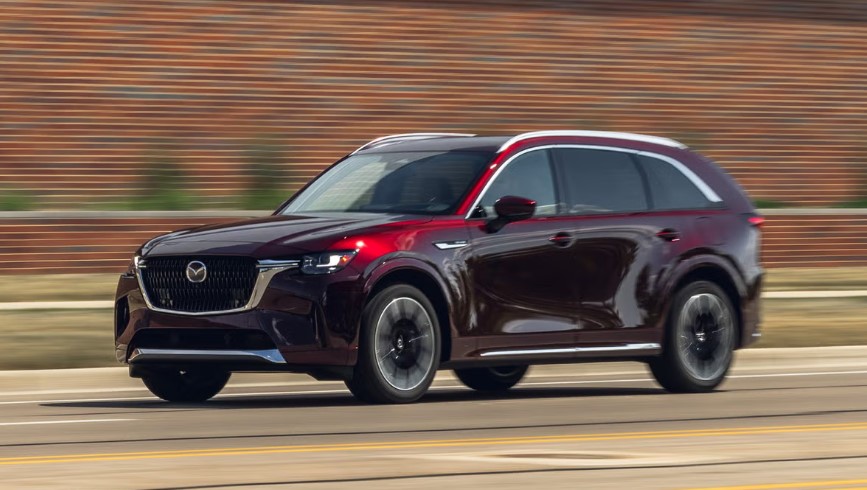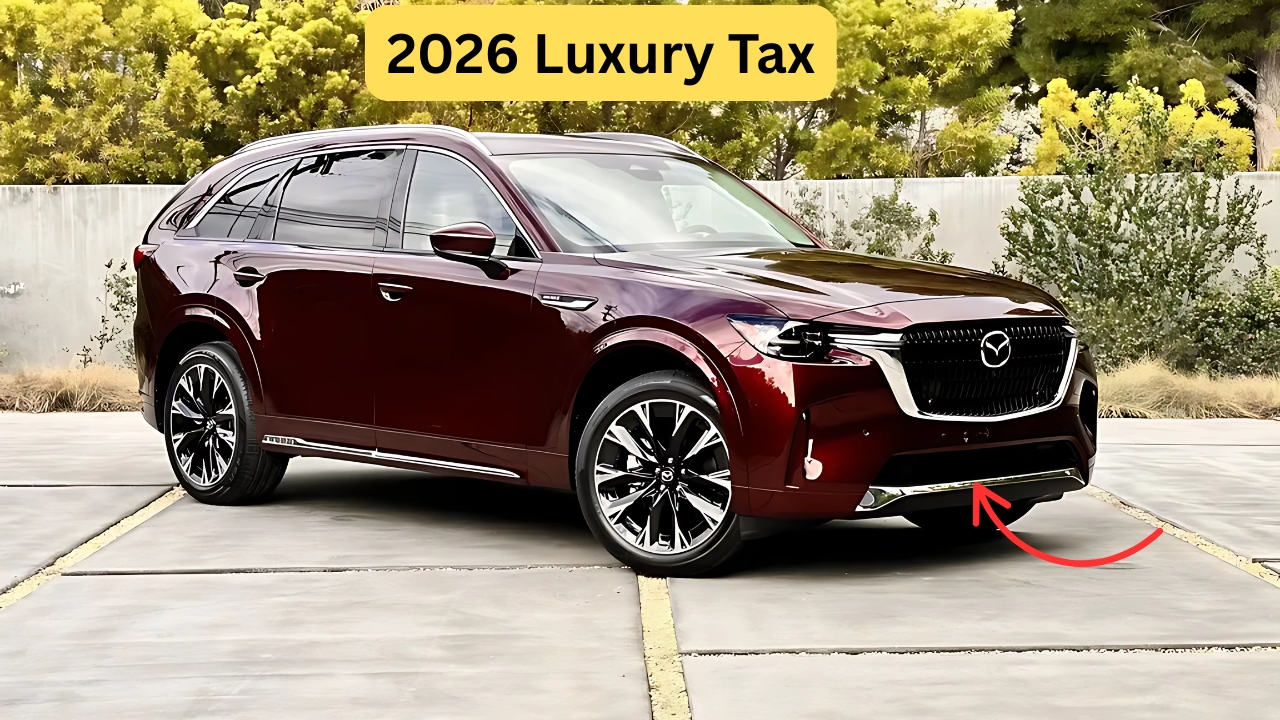The dream of owning a spacious family SUV just became more expensive for thousands of Australian households. Starting July 2025, popular family vehicles including the Toyota Kluger and Mazda CX-90 will lose their preferred tax status under Australia’s controversial Luxury Car Tax (LCT) system.
Many families who thought they were making smart, fuel-efficient choices are about to discover their next car purchase comes with an unwelcome surprise. The changes represent the most significant shift in luxury car taxation since the policy was introduced over two decades ago.
What’s Changing with the Luxury Car Tax in 2026?
The Australian government has dramatically tightened the definition of what qualifies as a “fuel-efficient vehicle” under the LCT system. Previously, any car consuming less than 7 litres per 100 kilometres earned the higher tax threshold of $91,387.
From July 1, 2025, only vehicles consuming 3.5 litres per 100 kilometres or less will qualify for this preferential treatment. This change effectively eliminates most petrol and hybrid family SUVs from the fuel-efficient category, pushing them into the lower threshold of $80,567.
How the Tax Actually Works

The Luxury Car Tax adds a 33% penalty on every dollar above the set threshold. For families purchasing a Toyota Kluger priced at $85,000, they’ll now pay an additional $1,463 in luxury car tax – money that previously wouldn’t have applied.
Consider the mathematical reality: a family buying a Mazda CX-90 at $82,000 will face approximately $477 in additional tax. While these amounts might seem modest, they represent real money for families already stretched by rising living costs.
Which Popular Family SUVs Are Affected?
The changes particularly impact seven-seat family SUVs that Australian families rely on for school runs, weekend getaways, and daily transportation needs. The Toyota Kluger, which previously met the 7L/100km benchmark, now falls short of the new 3.5L/100km requirement.
Similarly, the Mazda CX-90 D50e hybrid variant, despite its advanced powertrain technology, cannot achieve the stringent new fuel consumption targets. These vehicles represent the backbone of Australia’s family car market, making the tax changes particularly significant for suburban households.
The Real Impact on Australian Families
Financial Burden Increases
For many Australian families, the timing couldn’t be worse. Household budgets are already under pressure from inflation, rising interest rates, and increased cost of living across multiple categories.
Sarah Mitchell, a mother of three from Melbourne’s outer suburbs, recently discovered her planned Kluger purchase would cost an additional $1,500 in luxury car tax. “We saved for two years to afford this car, and now the government wants even more money,” she explains.
Limited Electric Alternatives
The new rules essentially force families toward electric vehicles (EVs) or plug-in hybrids to avoid the tax penalty. However, the reality is that suitable family-sized EVs remain expensive and often exceed even the higher luxury car tax threshold.
A Tesla Model Y, for instance, starts around $87,000 before on-road costs, meaning families still face luxury car tax despite choosing an environmentally friendly option. The BMW iX3, while electric, costs significantly more than traditional family SUVs.
Why These Changes Are Happening Now
Environmental Policy Goals
The Australian government frames these changes as part of its climate commitments, specifically targeting a 43% reduction in greenhouse gas emissions by 2030. By making fuel-efficient vehicles more financially attractive, policymakers hope to accelerate the transition away from traditional combustion engines.
The new 3.5L/100km threshold aligns with international best practices and encourages manufacturers to develop more efficient powertrains. However, critics argue the policy penalises families who need larger vehicles for practical reasons.
Revenue Generation Reality
Beyond environmental concerns, the luxury car tax generates substantial government revenue – approximately $1.2 billion annually according to recent federal budget projections. The tightened rules are expected to add an additional $155 million to government coffers each year.
This revenue comes directly from family budgets, effectively functioning as a hidden tax on practical vehicle choices. The government’s environmental messaging cannot disguise the fiscal reality of these policy changes.
Industry Response and Market Effects
Dealer Concerns Mount
Automotive dealers across Australia report increasing customer frustration with the luxury car tax system. Many families discover the additional costs only during final purchase negotiations, leading to deal cancellations and delayed purchases.
Mark Thompson, who manages a Toyota dealership in Brisbane, notes that families often need time to secure additional financing for unexpected tax costs. “We’re seeing more customers walk away because they simply can’t afford the extra tax on top of everything else,” he explains.
Manufacturer Strategies
Car manufacturers are responding by adjusting their model lineups and pricing strategies to minimize luxury car tax impact. Some brands are reducing standard equipment levels to keep base prices below the thresholds, then offering expensive option packages.
Others are accelerating the introduction of electrified powertrains, though the development timeline means most changes won’t appear until 2027 or later. This leaves current families with limited options for avoiding the tax increases.
Potential Relief on the Horizon
Trade Negotiations Could Eliminate the Tax
Recent reports suggest the Australian government might gradually phase out the luxury car tax entirely as part of free trade negotiations with the European Union. However, any changes would likely take years to implement and wouldn’t help families facing immediate purchase decisions.
The potential elimination creates uncertainty in the market, with some families choosing to delay purchases in hopes of future tax relief. Unfortunately, vehicle prices continue rising independently, potentially offsetting any future tax savings.
Gradual Reduction Considered
Rather than sudden elimination, government sources indicate preference for a gradual reduction approach to protect existing vehicle resale values. This strategy acknowledges that immediate tax removal could harm current vehicle owners whose cars would suddenly become less valuable.
The phased approach might see thresholds gradually increase over several years, or the tax rate reduced from 33% to lower levels. However, no concrete timeline exists for these potential changes.
What Families Should Do Now
Timing Your Purchase Decision
Families considering new SUV purchases face a difficult timing decision. Waiting for potential tax changes risks missing current model availability and facing higher base prices due to inflation.
Conversely, purchasing immediately locks in current pricing but commits families to paying the additional luxury car tax. Each family must weigh their specific circumstances and risk tolerance when making this decision.
Exploring Alternative Options
Consider investigating commercial vehicle classifications for dual-cab utes, which remain exempt from luxury car tax regardless of price. While not suitable for all families, these vehicles offer seven-seat variants that might meet practical needs.
Additionally, research available electric vehicle incentives from state governments, which might offset some luxury car tax costs. Some states offer registration discounts, rebates, or other benefits that improve the total cost equation for EV purchases.
The Broader Policy Questions
Fairness in Transportation Taxation
The luxury car tax raises fundamental questions about transportation equity in Australia. Families requiring larger vehicles due to family size or location often have limited alternatives, making the tax effectively mandatory rather than optional.
Regional families particularly struggle with these policies, as public transportation alternatives remain limited and vehicle requirements differ significantly from urban households. The tax system doesn’t account for these geographic realities.
International Comparisons
Australia remains one of the few developed countries with a specific luxury car tax, making our automotive market unique internationally. Most other nations rely on registration fees, fuel taxes, or emissions-based charges rather than purchase price penalties.
This policy isolation affects vehicle availability and pricing, as manufacturers must navigate unique Australian requirements that don’t exist in larger markets. The complexity adds costs that ultimately flow through to consumers.
Looking Forward: The Future of Family Transportation
Electric Vehicle Market Development
The luxury car tax changes represent a broader push toward electric vehicle adoption, but success depends on infrastructure development and vehicle availability. Current charging networks remain insufficient for many regional families.
Battery technology improvements and manufacturing scale should reduce electric vehicle costs over time, potentially making them more accessible to mainstream families. However, this transition will likely take the remainder of the decade to fully materialise.
Policy Evolution Expected
Transportation policy continues evolving rapidly, with new vehicle efficiency standards, potential road user charges, and other changes under consideration. Families planning vehicle purchases must navigate an increasingly complex regulatory environment.

The luxury car tax represents just one element of this shifting landscape, alongside federal fuel efficiency standards and various state-level incentives or penalties. Coordination between different government levels remains a significant challenge.
Preparing for Higher Costs
Australian families face a new reality when purchasing popular SUV models from 2026 onwards. The luxury car tax changes represent a significant policy shift that will affect thousands of households across the country.
While the environmental objectives behind these changes have merit, the practical impact on family budgets cannot be ignored. Families must now factor additional tax costs into their vehicle purchase decisions, potentially altering their choices or delaying purchases entirely.
The uncertainty surrounding potential future tax elimination adds another layer of complexity to family planning. Smart families will research all available options, understand the complete cost implications, and make informed decisions based on their specific circumstances rather than hoping for policy changes that might never materialise.
Frequently Asked Questions
Q: How much extra will I pay in luxury car tax for a Toyota Kluger? A: For a Kluger priced at $85,000, you’ll pay approximately $1,463 extra in luxury car tax from July 2025.
Q: Are electric SUVs exempt from the luxury car tax? A: Electric SUVs under $91,387 avoid the tax, but many family-sized electric SUVs exceed this threshold and still attract the 33% penalty.
Q: When do these luxury car tax changes take effect? A: The new fuel efficiency requirements begin July 1, 2025, affecting all vehicle purchases from that date forward.

